
|
|
|
Wind and solar installations in Latin America will bounce back in 2021 after a pandemic-related slowdown in 2020, according to analysis by Bloomberg New Energy Finance (Bloomberg NEF). Bloomberg NEF projects that new wind and solar installations will exceed 10 gigawatts (GW) for the first time in the region. They further project "around 30GW of total new additions through 2023, boosting cumulative utility-scale wind and solar capacity of 48GW today by two thirds."
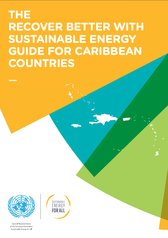 In August 2020, Sustainable Energy for All (SEforALL) released The Recover Better with Sustainable Energy Guide for Caribbean Countries. The guide "shows how sustainable energy investment can support Caribbean countries to 'Recover Better’ [from the COVID-19 pandemic] and accelerate a clean energy transition to deliver long-term economic growth and new jobs." The following information is from the press release. The full guide is available here. "According to the guide, the Caribbean region has a historic opportunity to transition from a fossil fuel-based economy to one powered by resilient, decentralized, clean energy. Currently, the Caribbean power sector is heavily dependent on imported fossil fuels and has some of the highest electricity costs in the world. Under an ambitious recover better strategy, Caribbean countries should aspire to invest as much as 25 percent of their stimulus budgets for on-grid and off-grid renewable energy – through a combination of solar, hydro and wind. Accelerating this transition will also generate significant economic growth, with an estimated annual saving of USD 9 billion in fuel costs if all 31 countries in the Caribbean move to 90 percent clean energy by 2030." 'This investment will also help grow the region’s resilience and energy security to deal with the impacts of climate change and extreme weather, which Caribbean countries are particularly vulnerable to. In addition to high electricity costs, centralized electricity systems have shown to be weak during extreme weather events with devastating effect. Off-grid systems, such as solar-based mini-grids, can keep critical services like health facilities connected when the centralized system fails. A renewable energy future also helps support faster progress on the Paris Agreement." “'As Caribbean countries continue to respond to the impacts of COVID-19, they have a once-in-a-lifetime opportunity to ‘Recover Better’ with sustainable energy to support greater energy resilience and security,' said Damilola Ogunbiyi, CEO and Special Representative of the UN Secretary-General for Sustainable Energy for All and Co-Chair of UN-Energy. 'By investing in sustainable energy, countries can use this moment to move away from a fossil fuel-based economy to one powered by clean energy that will provide cheaper electricity for consumers and help support the vital tourism industry in the region.' Countries that commit to an ambitious recover better strategy will benefit from increased GDP, affordable energy provision, and improved gender and health outcomes. Investment in distributed energy resources will not only benefit the electricity systems and communities, but also support tourism across the region – a core industry for Caribbean countries. From supporting food cold chains to powering businesses, local renewable resources and energy efficiency measures can enhance competitiveness, lower energy costs, increase resilience and stimulate the local industry. "The new Recover Better with Sustainable Energy Guide from SEforALL highlights key policy measures Caribbean governments should adopt to ensure a successful energy transition in this period, including:
IRENA Invites Renewable Energy Developers to Register Projects on Climate Investment Platform3/9/2020
The International Renewable Energy Agency (IRENA) invites renewable energy project developers to register projects that are seeking financing on the Climate Investment Platform, a global multi-stakeholder initiative to mobilize investments at the necessary scale to achieve meaningful progress towards climate objectives. The Climate Investment Platform is organized around 14 regional clusters, including: Each regional cluster and investor forum supports matchmaking between projects, project developers, and potential financiers and investors. Renewable energy projects, along with renewable-based electricity grid and energy efficiency projects, may be considered for support. IRENA’s Investment Forums will be structured around three main phases:
Climate Investment Platform The following information is from the IRENA website: "The Climate Investment Platform (CIP) is a global initiative, announced on the occasion of the UN Secretary General’s Climate Action Summit in September 2019, by the International Renewable Energy Agency (IRENA), the United Nations Development Programme (UNDP) and Sustainable Energy for All (SE4All), in co-operation with the Green Climate Fund (GCF). The CIP is an inclusive partnership welcoming all stakeholders, from governments and international organizations to the private sector, to scale up climate action and translate ambitious national climate targets into concrete investments on the ground. Working collectively and together with all interested partners, the CIP aims to mobilise investments at the necessary scale to achieve meaningful progress towards climate objectives. The CIP will initially focus on energy transition, with the ultimate goal of accelerating investments in renewable energy and enabling the realisation of the ambitious Nationally Determined Contributions (NDCs)." Source: IRENA
Despite the announced withdrawal by the Trump Administration of the United States from the Paris Agreement, climate and clean energy progress continues across the Americas. The following are some of the significant announcements by national and sub-national governments at the United Nations Climate Change Conference (COP 25) held in December 2019 in Madrid, Spain. America's Pledge, a coalition of U.S. states, cities, businesses, communities of faith, universities, health care and cultural institutions, and other organizations confirmed their commitment to fulfill America’s climate pledge to the world. The latest America's Pledge report, released on December 9, 2019, projects two emissions reductions scenarios based on city, state, business, and federal adoption of ambitious climate action policies:
Chile, Colombia, Costa Rica, Dominican Republic, Ecuador, Guatemala, Haiti, Honduras, Paraguay and Peru officially declared their commitment to a collective regional objective of 70 percent of renewable energy by 2030. The target was originally announced in November in Peru and will increase renewable energy generation from the current level of 56 percent, with a focus on non-conventional renewable energies. OLADE, the Latin American Energy Organization, will coordinate the initiative and provide data and a platform for countries to develop a work plan to implement the target. (OLADE 12/10/2019) [reprinted from NRDC Latin America Green News] Twelve renewable energy associations from Argentina, Chile, Colombia, Ecuador, Mexico, Peru, Uruguay and Spain signed an agreement to work together to promote renewable energy as a climate change mitigation solution. As part of the Ibero-american Renewable Energy Alliance, the 12 associations will work to replace fossil fuels, build “respectful, harmonious and constructive relations with communities in the areas where projects are developed," and support competition. ACERA, the Chilean Renewable Energy Association, has assumed the General Coordination of the alliance for one year, with the option of re-election for an additional consecutive period. (Revista Electricidad 12/10/2019) [reprinted from NRDC Latin America Green News] Photo: United Nations Climate Change - COP25, https://unfccc.int/cop25
We are pleased to share the new Renewables in Cities 2019 Global Status Report, which was released this week by the Renewable Energy Policy Network for the 21st Century (REN21). This report provides an overview of cities’ contributions to the global renewable energy transition.
Cities play a key role in accelerating clean energy deployment because they account for 55% of the world’s population, 75% of global carbon dioxide emissions, and 2/3 of global energy demand.
The Renewables in Cities 2019 Global Status Report was produced in collaboration with a global network of research partners. More than 300 volunteers from REN21's international network, including the InterAmerican Clean Energy Institute, contributed to the report. REN21 is a global network of renewable energy stakeholders from science, government, NGOs, and industry working to advance the clean energy transition. REN21 publishes the annual Renewables Global Status Report series to provide the public and decision-makers with current and actionable information on renewable energy data, markets, technologies, and trends. All reports are available online, free-of-charge. In a major milestone for the clean energy transition, renewable energy sources have for the first time exceeded coal both in generation and capacity in the U.S. electricity sector. Renewables Generate More Electricity Than Coal The U.S. Energy Information Administration (EIA) reports that: "In April 2019, U.S. monthly electricity generation from renewable sources exceeded coal-fired generation for the first time based on data in EIA’s Electric Power Monthly. Renewable sources provided 23% of total electricity generation to coal’s 20%. This outcome reflects both seasonal factors as well as long-term increases in renewable generation and decreases in coal generation. EIA includes utility-scale hydropower, wind, solar, geothermal, and biomass in its definition of renewable electricity generation." Renewable Power Capacity Also Exceeds Coal The trend towards renewables is also reflected in installed power generation capacity statistics published by the Federal Electricity Regulatory Commission (FERC). FERC's April 2019 Energy Infrastructure Update reports that coal accounted for 21.55% of total US installed capacity, while renewables accounted for 21.56%. Source: FERC Energy Infrastructure Update (April 2019) Long Term Trends
Despite the shift away from coal, the U.S. is still dependent on fossil fuels for electricity generation, with natural gas accounting for 44.44% of generation capacity. In addition, the EIA forecasts that coal will generate more electricity than renewables on an average annual basis in 2019 and 2020. However, both EIA and FERC statistics only report data for utility-scale facilities, which do not reflect the contribution of distributed small-scale renewables, such as the millions of roof-top solar systems that account for approximately 30% of the nation's electrical generation by solar. Projected capacity additions indicate that renewables capacity will grow at a faster rate than fossil fuel capacity, such that renewables will likely supply the largest share of US electricity supply within a few years. The government of Costa Rica has released an ambitious plan to decarbonize the country's economy by 2050. The plan has received international attention and praise as the latest example of Costa Rica's climate and clean energy leadership.
The introduction to the plan states: - Decarbonization and resilience are conceived as a means to transform the development model to one based on the bioeconomy, green growth, inclusion and the improvement of the quality of life of citizens. - The definition of the key actions was carried out based on the paradigm of transformational change - in contrast to the logic of incremental change - which is required to abolish the use of fossil fuels in our economy. - In order to bring the concept of decarbonization to practice, a methodology was used whose starting point is a long-term vision of Costa Rica: to have a decarbonized economy by 2050, which has reached the lowest possible level of emissions consistent with the global climate goal - that is; the goal of containing the increase in global temperature well below 2 ° C (and ideally a limit of increase to 1.5 ° C) with respect to pre-industrial levels. - From this global goal and applying a "backcasting" exercise considering the national reality, the public policy packages and actions that must be implemented from today to reach the goal to 2050 were identified. A link to the full plan (in Spanish) is here. A key component of the plan will be electrifying transportation, which accounts for 40% of Costa Rica's greenhouse gas emissions. In 2018, 98% of the country’s electricity came from renewable sources, and the economy grew 3%. Climatescope 2018 is a report by Bloomberg New Energy Finance (BNEF) that compiles and analyzes data on clean energy deployment, investment, and government policies in 103 developing nations. According to the report, developing nations are now leading the global clean power transition. Key findings include the following:
Climatescope's free searchable database with profiles of all 103 countries can be accessed here. Figure 1: Developing Country Clean Energy Investment Source: Bloomberg New Energy Finance. Includes 100 non-OECD nations plus Chile, Mexico, and Turkey.
Google announced on September 12, 2018, that it plans to expand its Latin American data center near Santiago, Chile. Since 2017, the center has operated entirely on solar power from Chile’s Atacama region. The center is linked to California through a subsea cable. Google will invest an additional $140 million to expand the facility.
Google executives told Reuters that they had chosen Chile "because of its favorable climate for foreign direct investment, a clear regulatory framework and a good supply of renewable energy resources." The International Energy Agency's 2018 review of Chile's energy policies found that the country "has emerged as a world-class destination for solar and wind energy developers." The percentage of electricity generated from renewables has tripled in the past five years, increasing to 18% of Chile's electricity mix (excluding large hydro). Chile's favorable policies, renewable energy resource potential, and innovations in renewable energy auction design have been key factors in attracting investment. This week the California Assembly passed Senate Bill 100, which would require 100% of the state's electricity to come from renewable and zero-carbon resources by 2045. Effectively, this would end the burning of fossil fuels for electricity. Current law requires the state to reach 50% renewable electricity by 2030. If Senate Bill 100 is signed by Governor Brown, California would become the world's largest economy to commit to 100% clean electricity. (With a GDP of $2.7 trillion, California has the fifth largest economy in the world.) UPDATE: Brown signed the bill on September 10, 2018. Lawmakers said that it was important for California to continue its pioneering efforts to curb greenhouse gas emissions. California is already feeling the impact of climate change with intense wildfires ravaging many areas of the state. A poll found that 76% of Californians supported the 100% clean energy target, including 53% of Republicans. The bill advanced with broad support from environmental, faith, social justice, public health, and business leaders. Photo: https://ca100.org/
|
Categories
All
Archives
January 2025
Blogroll
|
|
© 2013 - 2025 InterAmerican Clean Energy Institute, a project of Earth Ways Foundation Inc, a 501(c)3 nonprofit organization.
|
Web Hosting by iPage
|
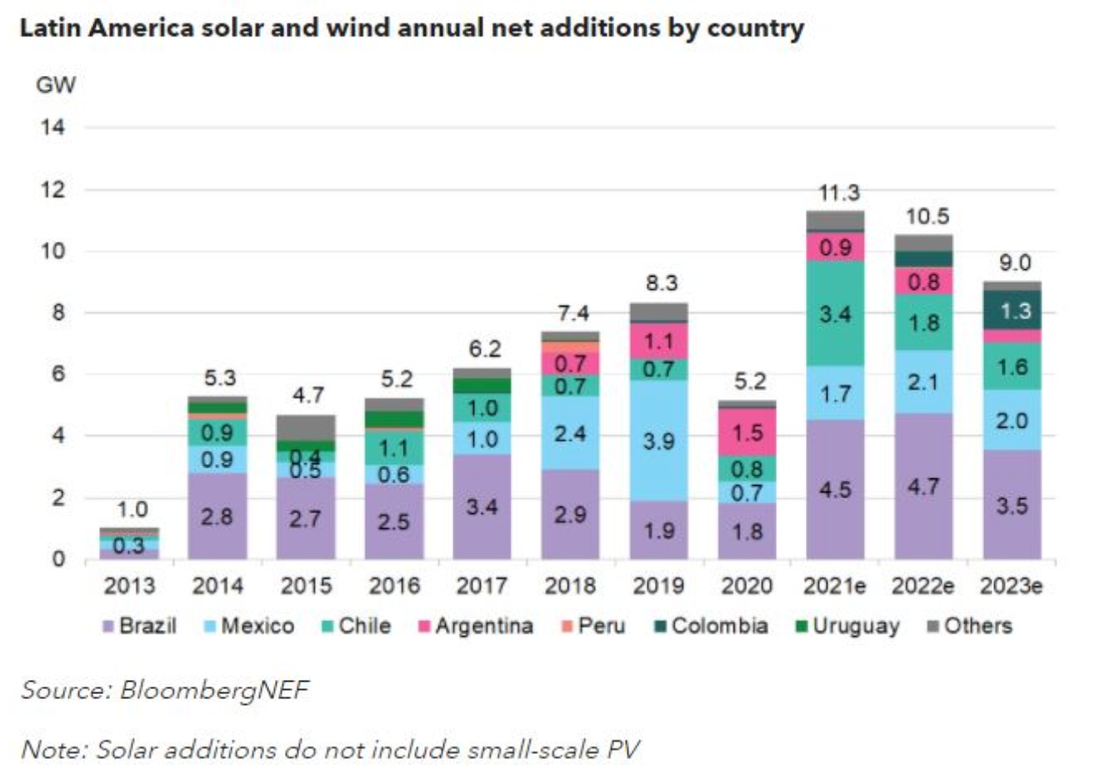
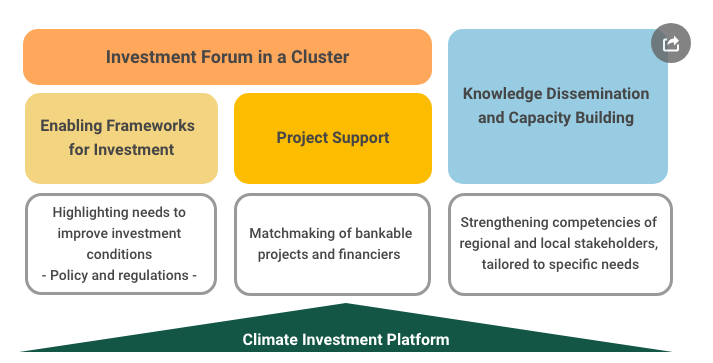

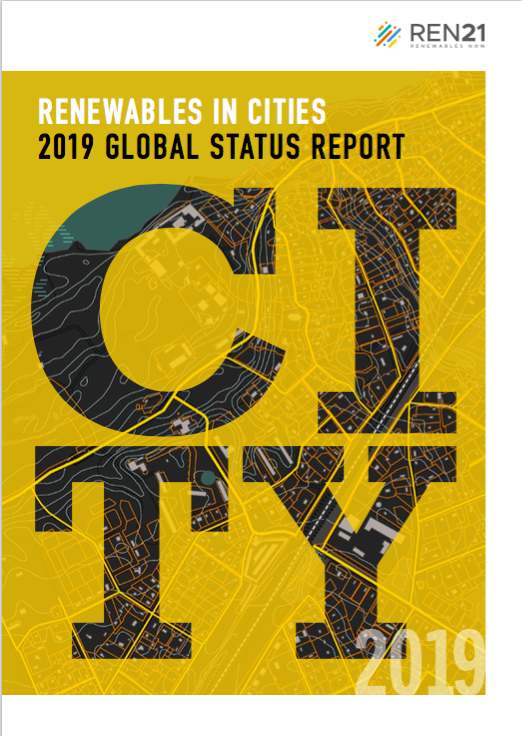


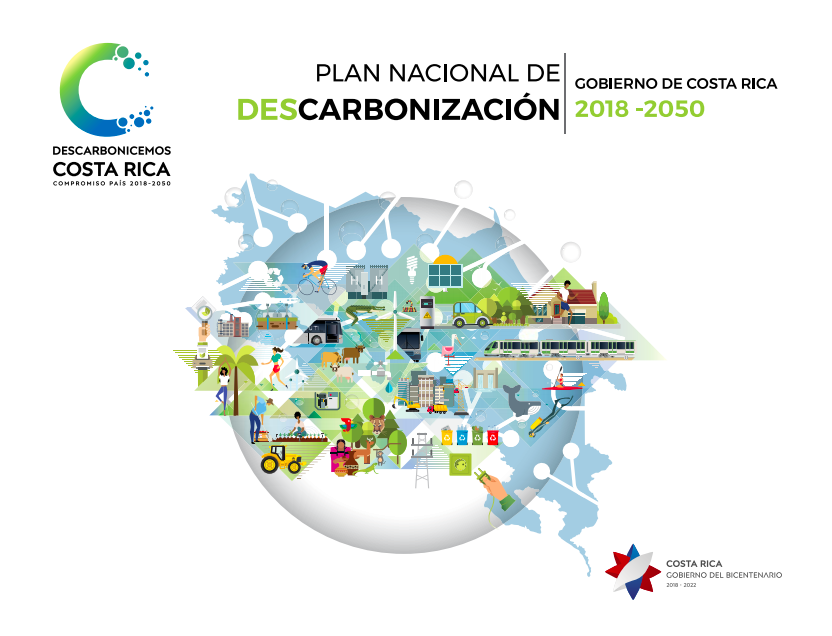
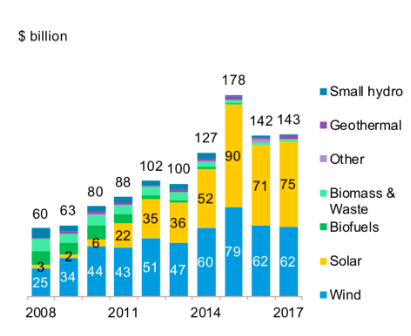
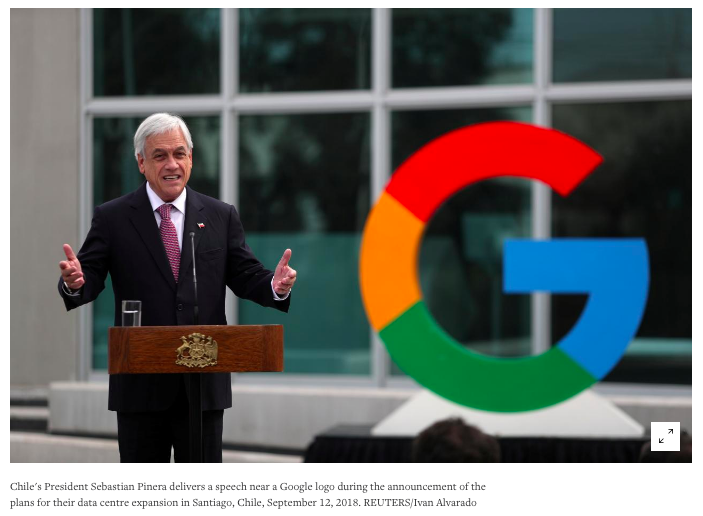

 RSS Feed
RSS Feed